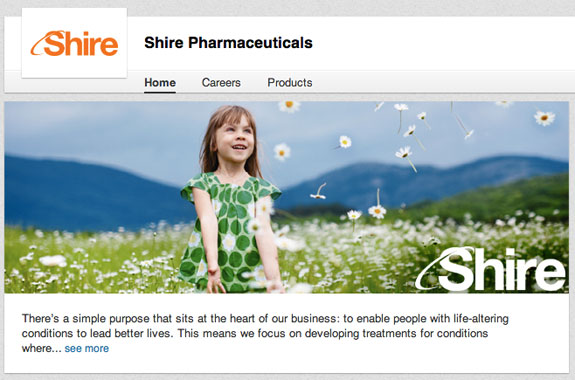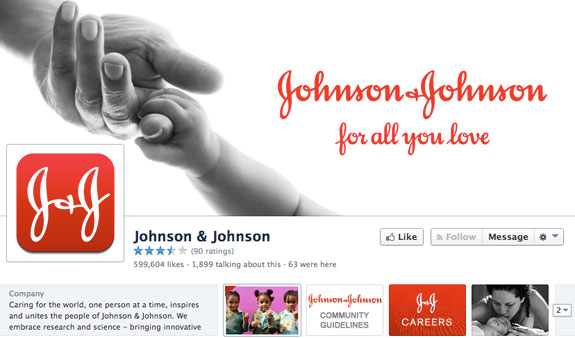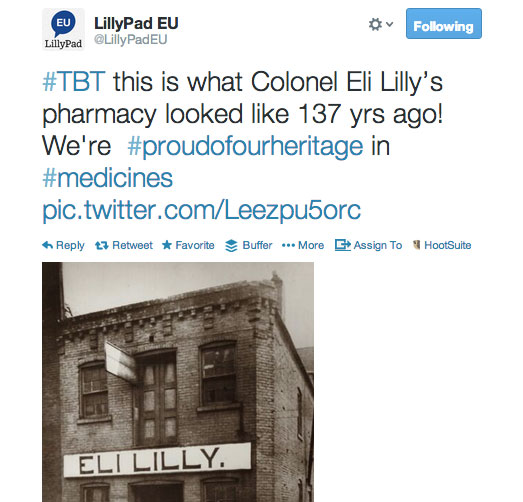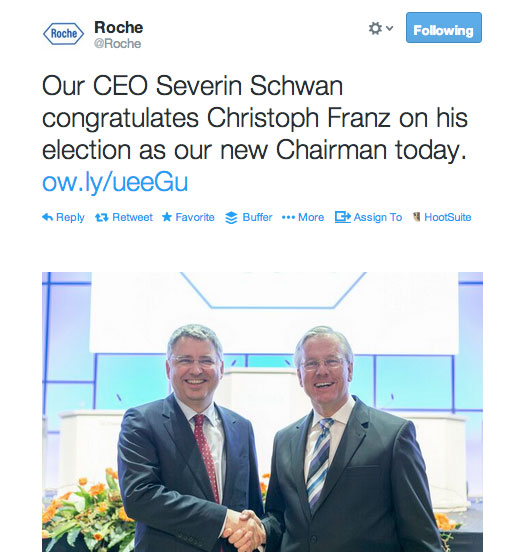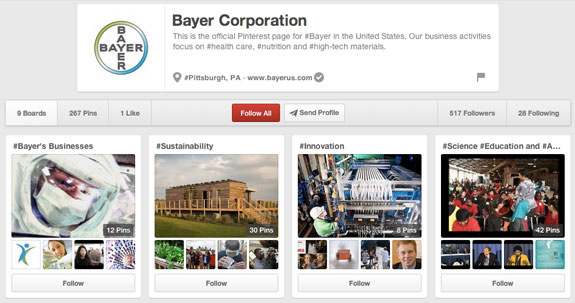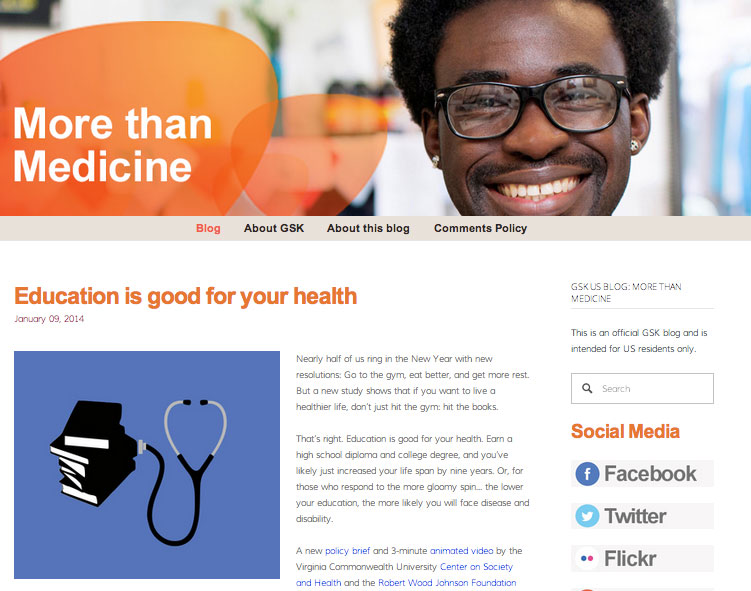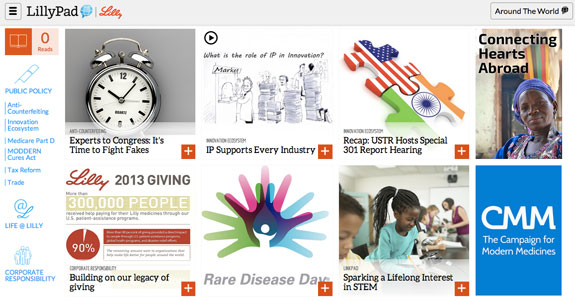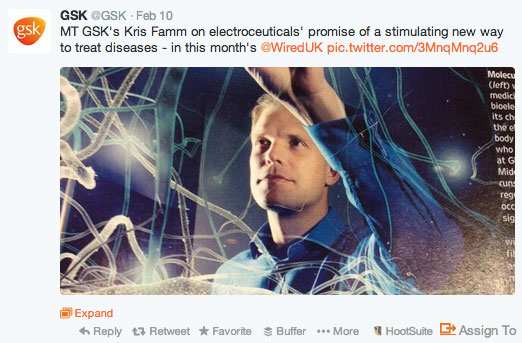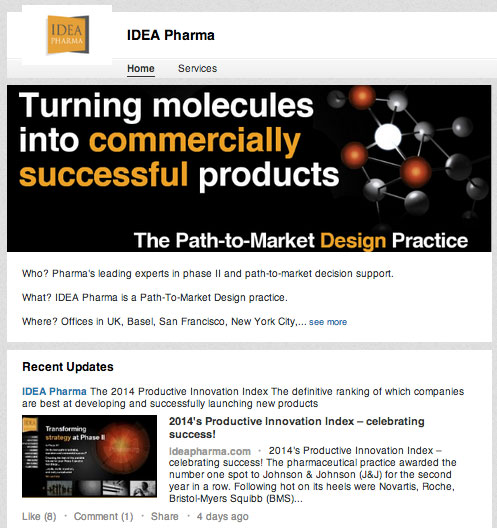Have you noticed that social media is becoming a lot more visual? Platforms that focus on visuals such as Instagram and Pinterest are becoming far more popular, and on the main platforms such as Facebook and Twitter, the chances of your content getting seen goes up if it contains strong images. Google+, too, displays pictures beautifully as do, of course, Tablets.
So how can Pharma take advantage of this trend – which is really becoming crucial for social media success?
1. Banners. Many of the main platforms allow you to adjust the way your own pages look, starting at the top with banners which can be customised. Make sure that the first thing your visitors see is a powerful image, which conveys what your brand is all about.
Here’s how Shire Pharmaceuticals has done it on LinkedIn:
The picture reinforces the image of a company that is working to make people healthy and happy.
Johnson & Johnson has done something similar on Facebook, with a banner that emphasises human connections:
Use sites such as canva.com to create customised images, which you can change periodically.
2. Infographics. Infographics are a way of presenting complex information visually. This can include data and statistics, results of a survey, ideas, tips, timelines and much more.
At the moment, Pharma largely uses infographics for disease awareness and healthcare issues. See, for example, this infographic on getting old created by Pfizer, based on the results of a survey they conducted while GSK created an infographic specially for Rare Disease Day.
Abbott has even created an interactive infographic (of sorts) exploring a day in the life of a diabetes patient:
It seems likely that the same material, presented as text, would simply never be accessed.
You can create your own infographics with Pikotchart. Make sure the information is clear and the layout attractive!
3. Photos from your archive. Ever heard of #throwbackthursday (also known as #tbt)? Every Thursday, companies around the world post a status or fact about themselves from the past.
For Pharma companies, this is a terrific opportunity to show a softer, human side by showcasing pictures from their archive. For example @LillyPadEU has tweeted their founder Eli Lilly’s original pharmacy and his signature, 137 years ago.
What a lovely way to highlight their heritage, and make a big multinational firm seem personal again. Essentially, they are telling a story about themselves.
What interesting pictures are in your archives?
4. Show off your company events. In general, we don’t advocate focusing on what’s going on in your company. Social media users are really turned off by it. But on occasion, it’s unavoidable, and just once in a blue moon, it’s actually desirable.
So when you have to announce the appointment of a new chairman, liven it up with a picture on your Twitter feed:
Post pictures from live events such as conferences to drum up interest. And if your company is doing something genuinely worthwhile, take a snapshot, like this one of Pfizer staffers and their colleagues volunteering in a conservation project.
Showing ‘regular’ staff members humanises big multinationals, makes them far easier to relate to and emphasises that they are not all scary and bad. (Please note, however, that in general the pictures should be of better quality than this one, taken in nature!)
5. Consider using Pinterest. Pharma companies have approached Pinterest with extreme caution because comments by other users cannot be moderated. Bayer, though, has used it to post its existing advertising materials, explain its various divisions and services (in the most general possible terms), show its commitment to sustainable development and display photos from its 150th birthday celebrations. You can explore its Pinterest boards here
Boehringer Ingelheim, meanwhile, has concentrated on pictures explaining its own history, as well as disease management, with boards about cancer, hepatitis C, hypertension and COPD.
Again, they are both using Pinterest to tell a story about themselves (their history, global relevance and commitment to social causes) and to inform patients about relevant health issues.
Pinterest, by the way, is an enormous driver of traffic to websites.
6. Spice up your blog. Because on the web, attention span is very low, you need to make your blog posts look interesting and easy to digest in order to give readers a chance of making it to the end. Without pictures, your posts will look too text-heavy, which is offputting. This is particularly relevant for Pharma, where the subject matter is often (ahem) quite dry.
Here’s an example of how not to do it: Sanofi’s blog posts are almost all image-free.
In general, we recommend a picture to every 300 words and as much as possible, to use faces and not cartoons such as this one unless they are bespoke for your article.
Eli Lilly is an example of a company that recently took this to an extreme, and its blog is now completely organised visually:
Isn’t this more interesting than a wordy list of recent posts?
Bonus tip: If you have amazing old blog posts that don’t have images – add them, and then post them on your social media channels as new! There’s no reason why, with a little visual tweak, they can’t get new exposure.
7. Spice up your Facebook, Twitter and Google+ feeds. As much as possible, find suitable graphics for your posts – don’t just use text updates. Your feeds will look so much better.
8. Create visuals from scratch. Got an inspiring quote, fun fact or a tip to share with your fans? Don’t just write them down – put them in a graphic, or lay them out over a suitable picture. They will pop out on the page, increasing their chances of going viral.
One company that has experimented with this is Idea Pharma, whose LinkedIn company page stands out for its use of graphics:
There are also numerous other examples from other industries, where this is a common tactic – particularly as inspirational thoughts are always popular on social media.
A great tool for creating attractive graphics is canva.com
9. Image of the day. Think broadly about what kind of pictures could interest your target audience. Images from science? About various diseases? Uplifting pictures of inspirational patients? Behind-the-scenes images from your labs or factories? Images of the technology you use?
Then create a series!
 Novartis, for example, ran a series of powerful photos of children afflicted by meningococcal disease, while Pfizer ran a series on black scientists for Black History Month.
Novartis, for example, ran a series of powerful photos of children afflicted by meningococcal disease, while Pfizer ran a series on black scientists for Black History Month.
Find inspiration in your own work, in pharmaceuticals in general, in the calendar, in nature, in history.
How else have you successfully used visuals? Let us know in the comments!
If you liked this post, you might enjoy:
- Dear Pharma companies: Stop talking about yourselves!
- LinkedIn Pharma company pages that rock
- In a regulated industry? How to minimise risk on social media


